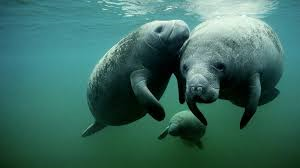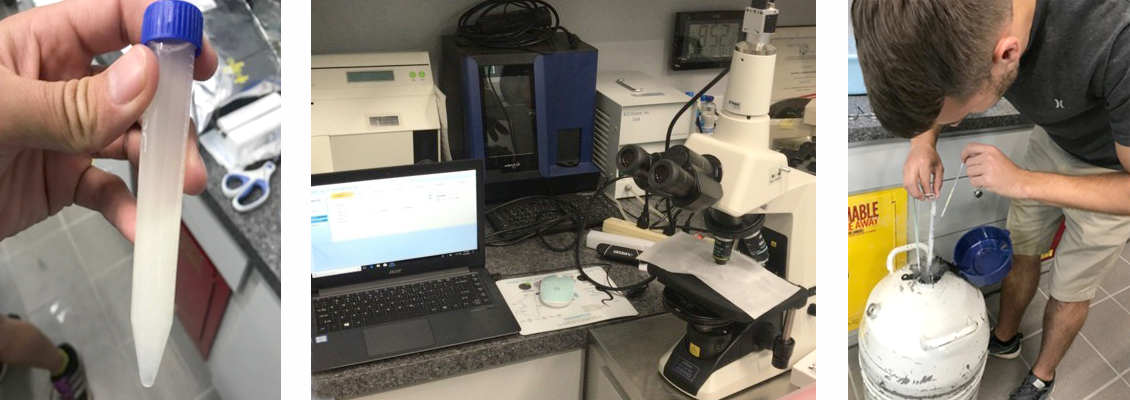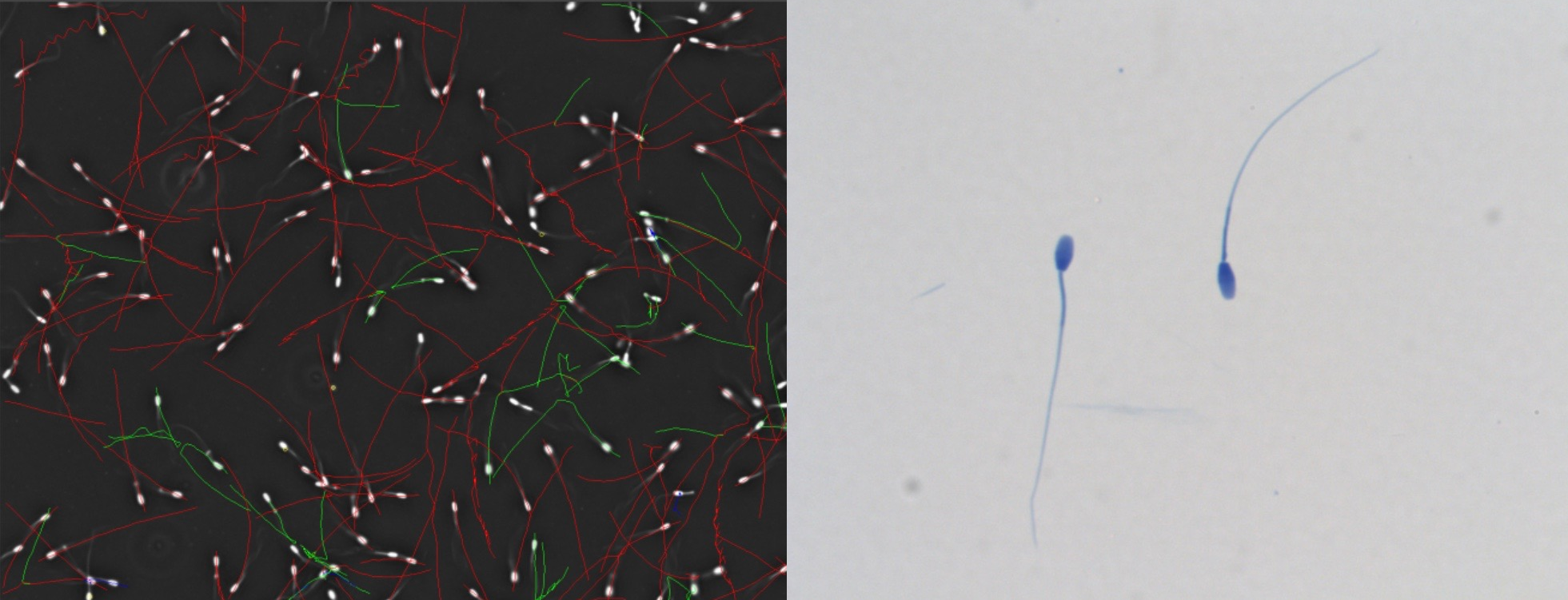Sperm analysis of West Indian manatee by University of Florida Aquatic Animal Health Program team using SCA® CASA System

Fig. 1: West Indian manatee from Florida. Modified from National Geographic.
The West Indian manatee (Trichechus manatus spp.) is a large herbivorous mammalian species (average length 3 meter and weight 500 Kg) that typically occupies estuarine and marine inshore environments (Fig. 1). The West Indian manatee remains the most widely and well-studied sirenian species but due to the inherent difficulties associated with marine mammal research, few studies have focused specifically on the reproductive physiology of male manatees.
Two investigators from the University of Florida, Jonathan Cowart and Danielle Arnold, both PhD candidates, are taking advantage of a unique opportunity to investigate the sperm biology of West Indian manatees in both Florida and Puerto Rico. The current research is the result of collaborative efforts between the UF Aquatic Animal Health Program, UF Department of Animal Sciences, Florida Fish and Wildlife Conservation Commission, and Puerto Rico Manatee Conservation Center. Sampling techniques include both whole semen sample collection (see Fig. 2 for whole semen sample) from a single manatee managed by the Puerto Rico Manatee Conservation Center as well as post-mortem sample collection from manatees within the state of Florida. Use of the Sperm Class Analyzer® version 6.3 CASA research system (see Fig. 2 for SCA lab setup) has allowed an objective analysis of sperm motility, including kinematic parameters (Fig. 3), for the very first time for this species. Sperm morphology and morphometry (Fig. 3) were additional areas of interest and were likewise analyzed using the Sperm Class Analyzer® version 6.3 CASA research system. Preliminary analyses completed show that morphometric measurements differ significantly from the published literature indicating a need to redefine accurate morphometric measurements for this species.

Fig. 2: Left: Manatee semen sample; Middle: SCA lab setup; Right: Freezing manatee sperm in liquid nitrogen.
The resulting data will establish normal reference points when evaluating male fertility and will provide information regarding both developmental and seasonal gonadal function. This research helps establish much needed baselines for sperm biology and encourages the continued reproductive research of this currently threatened marine mammal species. In addition to the basic semen parameter research, the investigators conducted a pilot study for liquid nitrogen storage and cryopreservation of manatee semen with promising results (see Fig. 2 for semen freezing). Multiple semen extenders were used in this pilot study, with the achievement of successful cryopreservation, providing a first look at the feasibility of utilizing these assisted reproductive technologies (ART) for manatees. Further optimization of these techniques will build a solid foundation for the use of ART in manatees.

Fig. 3: Left: Sperm motility tracks of West Indian manatee analyzed at Puerto Rico Manatee Conservation Center (Red: Rapid velocity; Green: Medium velocity; Blue: slow or non-progressive velocity); Right: sperm stained with SpermBlue for SCA morphology analysis.
The current study is part of a larger sperm biology project, in collaboration with Professor Gerhard van der Horst (University of Western Cape, South Africa), investigating the evolutionary relationships among elephant, hyrax and manatee sperm. For many years, it has been assumed that the African rock hyrax (dassie) is one of the closest evolutionarily-related species to the elephant. More recent information suggests otherwise, indicating there may be a closer relationship between the elephant and manatee. It is hopeful that this productive collaborative research endeavour will provide better insight into the phylogenetic relationships of manatees, elephants, and hyraxes and further unravel the phylogenetic mystery of “who is closer related to who?”.
Jonathan Cowart
Aquatic Animal Health Program
College of Veterinary Medicine, University of Florida
Danielle Arnold (MS)
Department of Animal Sciences, University of Florida
Gerhard van der Horst (PhD, PhD)
Medical BioScience Programme, University of Western Cape



Leave A Comment